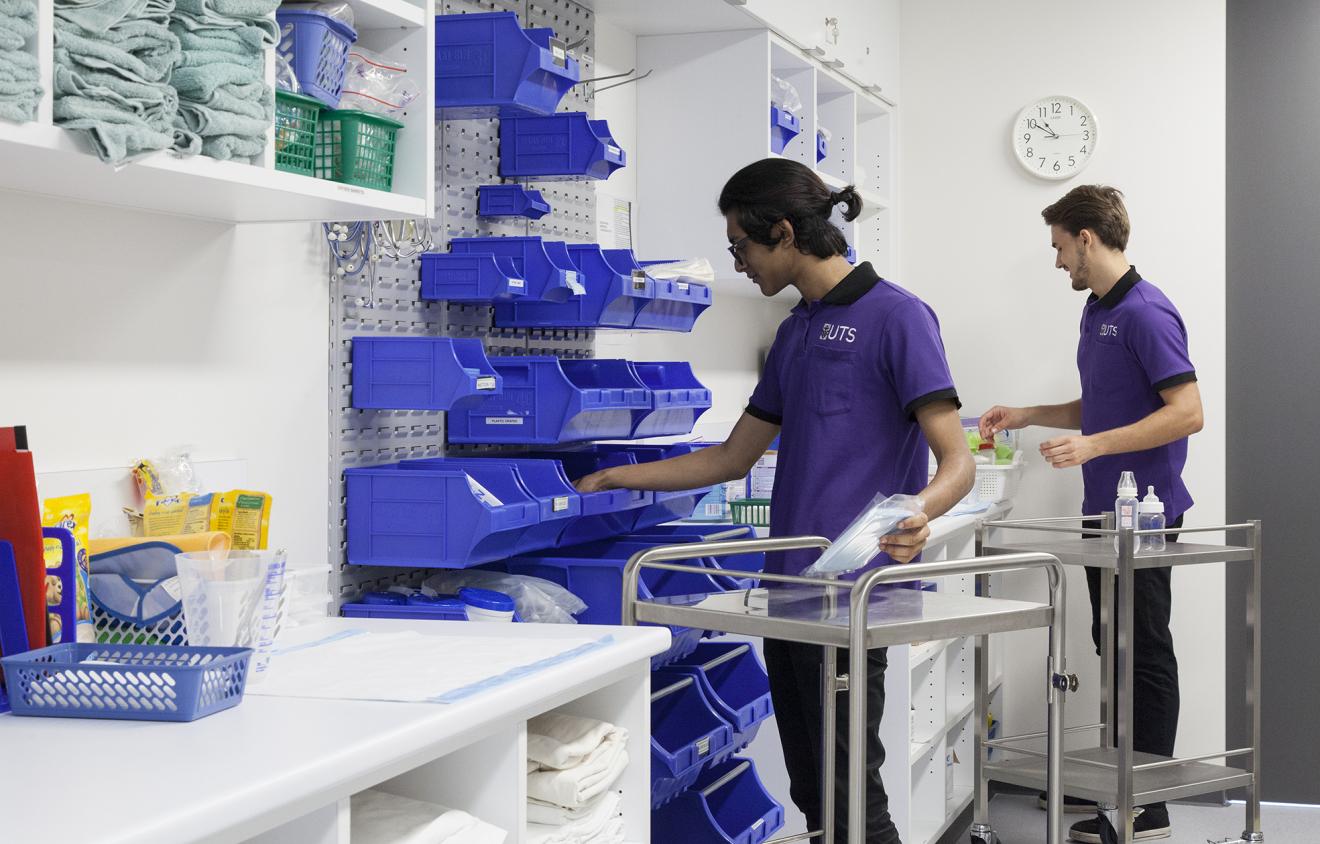
Keywords: second year subject, role play, experiential learning.
Faculty: Health
Number of students enrolled (Autumn session): 450
Medical Surgical Nursing is a second year subject, which builds on knowledge acquired in first year, and other clinical subjects. In this subject, students are exposed to clinical case scenarios where they analyse and apply problem-solving skills to common medical-surgical problems. The cohort is usually split in half with some of the students attending classes in the Autumn session, and the other half in Spring, with each group having 300-400 students enrolled.
What's happening?
There are seven to eight 50-minute lectures spread over the 11-week period, which are complemented with weekly lab classes where students practically apply their skills and knowledge through simulations. Students also have four weeks of practical activities in hospital wards.
Before the semester starts, the lecturer sends an email to students asking for four volunteers from the current students’ cohort. These students will help her in some of her class activities, which involve creative role plays. In return for their participation the lecturer offers her notes to the volunteer students.
Experiential learning activity
In this activity, students experience the pathway of an electric wave through the chambers of the heart. All students are invited to sit in the (squared shaped) middle section of the Guthrie theatre, and students are then divided into four sections, representing the four chambers of the heart – ventricles and atria. Two of the volunteer students will sit in specific areas of the theatre, wearing headsets that identify them – one as a sinus node (where the wave starts) and the other with a sign of an AV node (where the wave slows, before it starts to go down). The whole class of students will then enact an impulse as a Mexican wave, and see the electric wave going across and down.
Role play in lectures
Two of the volunteer students learn how to beat cardiac rhythms in drum sets, mimicking sounds from the atrium and ventricles.
In the first part of the cardiac, lecture students go through the anatomy and physiology of the heart. The lecturer then projects images of different rhythms strips, and each of these images are discussed separately with the whole class. The two volunteer students will play the beats in the drums, and the whole class is invited to analyse what they see and hear – Does this look/sound like a regular beat? Do we have p waves? Do p waves appear in front of QRS? Are they pointy? They may look “normal” but they might just be too slow. In what scenarios could they be normal?
Students are invited to interpret the images, as they consider different aspects, via prompts by the lecturer.
Why do we think it's successful?
Multimodal ways of learning
Both activities described above use a mixed-mode approach to teaching and learning. The lecturer sets the tone of the cardiac lecture from the beginning, playing the sounds of a heart beating as students enter the lecture theatre. Images, sound, and the use of body motion, in addition to the lecturer’s facilitation of a discussion on a particular issue, are all combined. The combination of elements is fun, but also importantly, they help students in thinking about what they are learning in different ways.
Fun, humour and stories
The lecturer believes it is important to share jokes and stories with her students, to break the rhythm of lectures and to bring students along in the flow of the class. These moments help students to remember and make sense of what they're learning.
Photo credit: Andrew Worssam

